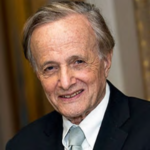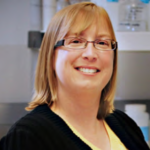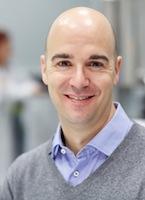Plenary Speakers & NTC Award Winners
Plenary Speaker Topic Plenary Session
Prof. Paul Weiss Atomic scale surface chemistry and physics, molecular devices, nanolithography Wednesday, 09:00-09:50
Prof. John Polanyi Surface aligned reaction governs nanofabrication Thursday, 09:00-09:50
Prof. Shelley Minteer Nanobioelectrocatalysis for Energy and Environmental Applications Friday, 09:00-09:50
Prof. Yury Gogotsi Optical and Electronic Properties of 2D Transition Metal Carbides and Nitrides (MXenes) Friday, 10:25-11:15
| Keynote Speaker | Topic | Keynote Session |
|---|---|---|
| Prof. Luisa Torsi | Single molecule bio-electronic smart system array for clinical testing | Wednesday, 09:50-10:25 |
| Prof. Cinzia Casiraghi | Ink-jet printed two-dimensional materials | Wednesday, 14:20-14:55 |
| Prof. Luisa De Cola | Supramolecular assembly, luminescent materials, biomedical applications | Thursday, 9:50-10:25 |
| Prof. Louis Hueso | Electronic transport in nanoscale devices: spintronic and organic electronic applications | Friday, 09:50-10:25 |
NTC Awardee Award Citation Presentation
Prof. Max Shulaker Early Career Award For his pioneering work in carbon nanotubes and the broad area of nano-systems, including nanofabrication technologies, nanodevices, circuits, and architectures. Thursday, 14:20-15:05
Prof. Jean-Pierre Leburton Pioneer Award For pioneering contribution to the theory and simulation of semiconductor nanostructures and low dimensional nanoscale devices. Friday, 14:00-15:00
Dr. Myeong-Lok Seol Early Career Award For innovative contributions to the development of triboelectric power generation and printed supercapacitors for space missions. --
Pr. John Yeow Distinguished service Award For distinguished service, including accomplishments as an Editor-in-Chief of the IEEE Nanotechnology Magazine and other service achievements. --
Plenary Speakers
Prof. John Polanyi (Nobel laureate), University of Toronto
Surface aligned reaction governs nanofabrication
The research of the laboratory falls into the following three phases: gaseous reaction dynamics by measurement of state-specified rates, transition state spectroscopy, surface aligned photochemistry.
John Charles Polanyi, educated at Manchester University, England, was a postdoctoral fellow at Princeton University, U.S.A. and the National Research Council, Canada. He is presently a faculty member in the Department of Chemistry at the University of Toronto. His research is on the molecular motions in chemical reactions in gases and at surfaces. He is a Fellow of the Royal Societies of Canada (F.R.S.C.), of London (F.R.S.), and of Edinburgh (F.R.S.E.), also of the American Academy of Arts and Sciences, the U.S. National Academy of Sciences, the Pontifical Academy of Rome and the Russian Academy of Sciences. He is a member of the Queen’s Privy Council for Canada (P.C.), and a Companion of the Order of Canada (C.C.). His awards include the 1986 Nobel Prize in Chemistry, the Royal Medal of the Royal Society of London, and over thirty honorary degrees from six countries.
He has served on the Prime Minister of Canada’s Advisory Board on Science and Technology, the Premier’s Council of Ontario, as Foreign Honorary Advisor to the Institute for Molecular Sciences, Japan, and as Honorary Advisor to the Max Planck Institute for Quantum Optics, Germany.
He was a founding member of both the Committee on Scholarly Freedom of the Royal Society, and a further international human rights organization, the Canadian Committee for Scientists and Scholars, of which he is the current President. Additionally he was the founding Chairman of the Canadian Pugwash Group in 1960, and has been active for 40years in International Pugwash. He has written extensively on science policy, the control of armaments, and peacekeeping. He is co-editor of a book, The Dangers of Nuclear War, and was a participant in the recent ‘Canada 21’ study of a 21st-century defence posture for Canada. He was co-chair (with Sir Brian Urquhart) of the Department of Foreign Affairs International Consultative Committee on a Rapid Response Capability for the United Nations.
http://sites.utoronto.ca/jpolanyi/
Prof. Yury Gogotsi, Drexel University
Optical and Electronic Properties of 2D Transition Metal Carbides and Nitrides (MXenes)
A. J. Drexel Nanomaterials Institute and Department of Materials Science and Engineering, Drexel University, Philadelphia, PA, USA
Prof. Gogotsi works on synthesis and surface modification of inorganic nanomaterials, such as nanodiamond, carbide-derived carbons, nanotubes, and two-dimensional carbides and nitrides (MXenes). His group also explores energy related and other applications of materials discovered and developed in Gogotsi Lab. His work on carbon and carbide nanomaterials with tunable structure and porosity had a major impact on the field of capacitive energy storage.
https://nano.materials.drexel.edu/team/
Prof. Shelley Minteer, University of Utah
Nanobioelectrocatalysis for Energy and Environmental Applications
Shelley Minteer is a USTAR Professor in the Departments of Chemistry and Materials Science & Engineering at the University of Utah. She conducts externally-funded research, teaching at the undergraduate and graduate level.
Minteer joined JCESR in 2015 to help take a more predictive approach to rationally designing anolytes and catholytes for redox flow batteries. She was focused on developing electroanalytical and spectroscopic assays for QSPR parameter determination. These assays were used with QSPR modeling to predict more stable electrolytes, electrolytes that minimize crossover, and more soluble electrolytes for non-aqueous redox flow batteries in collaboration with Matthew Sigman’s group at the University of Utah and Melanie Sanford’s group at the University of Michigan.
Minteer also worked with Sanford’s group and Brett Helm’s group at Berkeley Lab to develop electroanalytical tools for studying self exchange in oligomer electrolytes. These projects have led to publications in high impact journals including the ACS Central Science and the Journal of the American Chemical Society.
https://chem.utah.edu/directory/minteer/
Professor Paul Weiss, UCLA
Atomic scale surface chemistry and physics, molecular devices, nanolithography
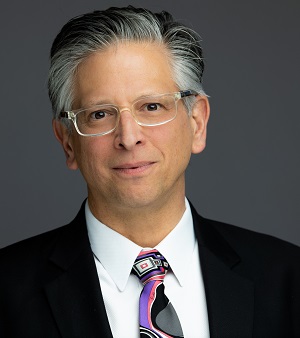 Paul S. Weiss holds a UC Presidential Chair and is a distinguished professor of chemistry & biochemistry, bioengineering, and materials science & engineering at UCLA. He received his S.B. and S.M. degrees in chemistry from MIT in 1980 and his Ph.D. in chemistry from the University of California at Berkeley in 1986. He was a postdoctoral member of technical staff at Bell Laboratories from 1986-88 and a visiting scientist at IBM Almaden Research Center from 1988-89. He served as the director of the California NanoSystems Institute and held the Fred Kavli Chair in NanoSystems Sciences at UCLA from 2009-14. Before coming to UCLA, he was a distinguished professor of chemistry and physics at the Pennsylvania State University, where he began his academic career in 1989. His interdisciplinary research group includes chemists, physicists, biologists, materials scientists, mathematicians, bioengineers, electrical and mechanical engineers, computer scientists, clinicians, and physician scientists. They focus on the ultimate limits of miniaturization, exploring the atomic-scale chemical, physical, optical, mechanical, and electronic properties of surfaces, interfaces, supramolecular, and biomolecular assemblies. They develop new techniques to expand the applicability and chemical specificity of scanning probe microscopies. They apply these and other tools to study self- and directed assembly, and molecular and nanoscale devices. They advance nanofabrication down to ever smaller scales and greater chemical specificity to operate and to test functional molecular assemblies, and to connect to the chemical and biological worlds in neuroscience, gene editing, cancer immunotherapy, tissue engineering, and the microbiome. He has written over 400 publications, holds over 30 patents, and has given over 800 invited, plenary, keynote, and named lectures.
Paul S. Weiss holds a UC Presidential Chair and is a distinguished professor of chemistry & biochemistry, bioengineering, and materials science & engineering at UCLA. He received his S.B. and S.M. degrees in chemistry from MIT in 1980 and his Ph.D. in chemistry from the University of California at Berkeley in 1986. He was a postdoctoral member of technical staff at Bell Laboratories from 1986-88 and a visiting scientist at IBM Almaden Research Center from 1988-89. He served as the director of the California NanoSystems Institute and held the Fred Kavli Chair in NanoSystems Sciences at UCLA from 2009-14. Before coming to UCLA, he was a distinguished professor of chemistry and physics at the Pennsylvania State University, where he began his academic career in 1989. His interdisciplinary research group includes chemists, physicists, biologists, materials scientists, mathematicians, bioengineers, electrical and mechanical engineers, computer scientists, clinicians, and physician scientists. They focus on the ultimate limits of miniaturization, exploring the atomic-scale chemical, physical, optical, mechanical, and electronic properties of surfaces, interfaces, supramolecular, and biomolecular assemblies. They develop new techniques to expand the applicability and chemical specificity of scanning probe microscopies. They apply these and other tools to study self- and directed assembly, and molecular and nanoscale devices. They advance nanofabrication down to ever smaller scales and greater chemical specificity to operate and to test functional molecular assemblies, and to connect to the chemical and biological worlds in neuroscience, gene editing, cancer immunotherapy, tissue engineering, and the microbiome. He has written over 400 publications, holds over 30 patents, and has given over 800 invited, plenary, keynote, and named lectures.
Keynote Speakers
Prof. Louis Hueso, CIC NanoGune
Electronic transport in nanoscale devices: spintronic and organic electronic applications
Luis E. Hueso is currently an Ikerbasque Research Professor, Leader of the Nanodevices group and Scientific Director of the “Maria de Maeztu” Unit of Excellence CIC nanoGUNE.
He obtained a PhD degree in Physics at the University of Santiago de Compostela with J. Rivas, and was awarded postdoctoral fellowships at both the University of Cambridge (MSCA Fellow with N.D. Mathur) and the Italian National Research Council (with V.A. Dediu). Before his arrival to nanoGUNE in 2009, he was a Lecturer at the University of Leeds (UK). His research focuses on electronic transport in nanoscale devices, and particularly spintronic and organic electronic applications. He has positions as an Associate Editor at Journal of Materials Chemistry C and as a Member of the Editorial Board of Applied Physics Letters.
https://www.nanogune.eu/luis-hueso
Prof. Luisa De Cola, University of Strasbourg
Supramolecular assembly, luminescent materials, biomedical applications
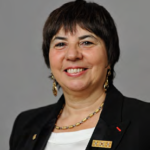
Full Professor (Class Exceptionnelle), AXA chair of Supra-molecular and Biomaterial Chemistry, at ISIS, University of Strasbourg and CNRS, France and adjunct Scientist at the Karlsruher Institut für Technologie, Germany.
De Cola group is interested in the self assembly of molecules as well as nanoparticles in defined structure. The assemblies can be fibers, micelles, vesicles, gels and are dynamic reversible structures. Self-assembly can induce several properties such as change in the emission color, enhancement or turn on of the emission, different reactivity or even different functionality. Amongst the molecules selected platinum complexes and for the materials porous silica. Systems can be organized using covalent and/or non covalent interactions or even using light (optical tweezer).
Prof. Cinzia Casiraghi, University of Manchester
Ink-jet printed two-dimensional materials
Cinzia Casiraghi is a Professor of Nanoscience in the Department of Chemistry at the University of Manchester and National Graphene Institute in the UK.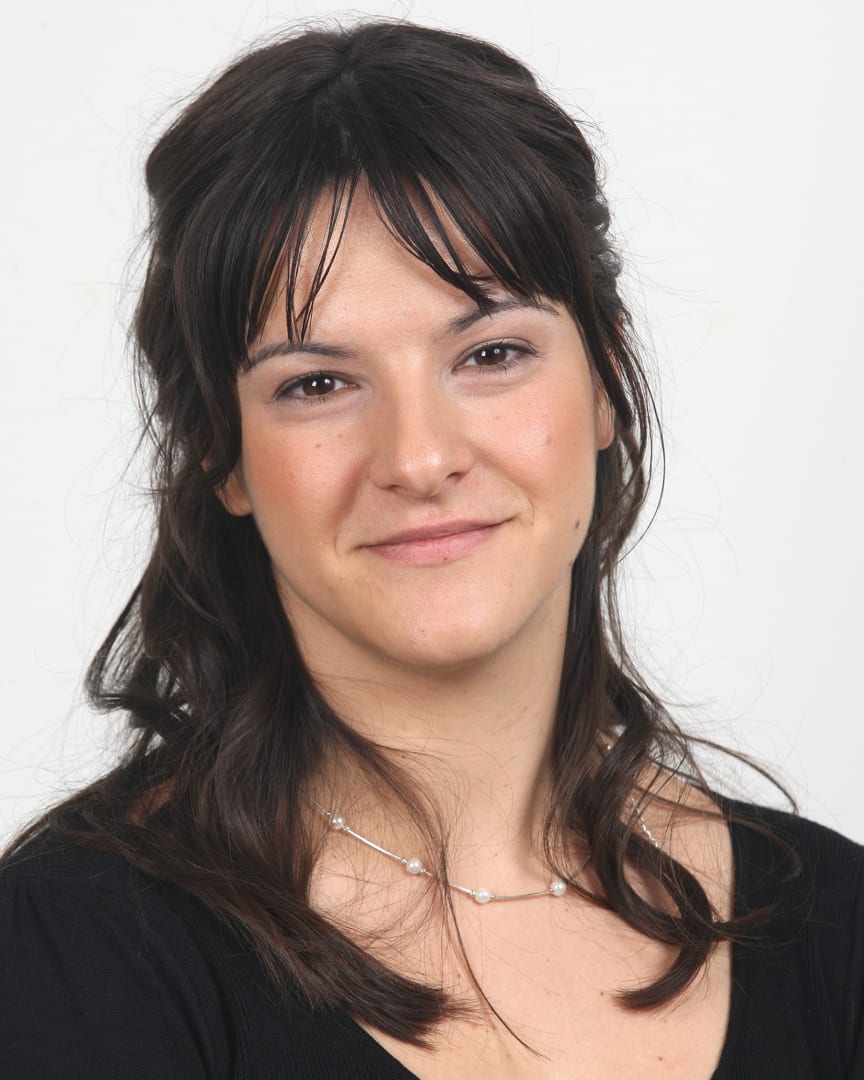
After her PhD, she completed postdoctoral positions both at Cambridge and at the Free University of Berlin, Germany. In 2008 Casiraghi was awarded the Sofja Kovalevskaya Award, a €1.65 million grant awarded to the highest quality junior researchers from outside Germany, for work concerning formation of graphene and carbon nanotubes. She moved to the University of Manchester in 2010, and was appointed Professor in Nanoscience in 2016, the same year that she was awarded a Philip Leverhulme Prize. She uses Raman spectroscopy to study two-dimensional materials; which include graphene and chalcogenides. She has focussed on ink-jet printed two-dimensional materials as well as nanotubes for sensors, photodetectors and solar cells. Casiraghi was awarded a European Research Council (ERC) consolidator grant to study the Nucleation of Organic Crystals on 2D Templates. She has also demonstrated diamond-like carbon can be to increase storage density of data storage.
Outside of academia, Casiraghi has contributed to popular science segments for BBC Radio 4 and The Guardian.
https://www.research.manchester.ac.uk/portal/cinzia.casiraghi.html
Prof. Luisa Torsi
Single molecule bio-electronic smart system array for clinical testing
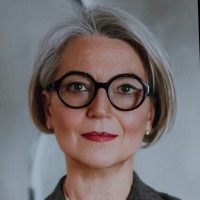 Luisa Torsi is full professor of Chemistry since 2005 and is the immediate past-president of the European Material Research Society.
Luisa Torsi is full professor of Chemistry since 2005 and is the immediate past-president of the European Material Research Society.
Torsi received her laurea degree in Physics from the University of Bari in 1989 and the PhD in Chemical Sciences from the same institution in 1993. She was post-doctoral fellow at Bell Labs from 1994 to 1996. In 2005 and 2006 she was invited professor at the University of Anger and Paris 7, respectively. Presently she is adjunct professor at the Abo Academy University in Finland. In 2010 she has been awarded with the Heinrich Emanuel Merck prize for analytical sciences, this marking the first time the prestigious award is given to a woman and to an Italian scientist. She is also the recipient of the main overall platinum 2015 prize of the Global-Women Inventors and Innovators Network. She has been also elected 2017 Fellow of the Material Research Society for pioneering work in the field of organic (bio) electronic sensors and their use for point-of-care testing. She has been also awarded with the IUPAC 2019 Distinguished Women in Chemistry or Chemical Engineering. Prof. Torsi had been serving extensively as expert reviewer for the European Commission being for three years the Chair of the Chemistry Panel for the evaluation of the Marie Curie Research Fellowships. She was also member the Physical and Engineering Science 05 panel of the European Research Council for the evaluation of the consolidator grants. In 2014 she has been appointed as member of the H2020 Program Committee by the Italian Minister for Education and Research and is still serving in this role. Torsi has authored almost 200 ISI papers, including papers published in Science, Nature Materials, Nature Communications, PNAS, Advanced Materials, Scientific Reports and is co-inventor of several international awarded patents. Her works gathered almost 11.000 Google scholar citations resulting in an h-index of 50. She has given more than 170 invited lectures, including almost 25 plenary and key notes contributions to international conferences.
https://it.linkedin.com/in/luisa-torsi-75b8bb34
NTC Award Winners
Prof. Jean-Pierre Leburton, University of Illinois Urbana-Champaign, NTC Pioneer Award
Jean-Pierre Leburton received his Ph.D. from the University of Liege (Belgium) in 1978. He is a professor in the UIUC Department of Electrical and Computer Engineering and a research professor in the Holonyak Micro- and Nano-Technology Laboratory and in the Coordinated Science Laboratory. He is also Professor of Physics at UIUC.
 Professor Leburton’s expertise is the theory and simulation of nanoscale semiconductor devices and low-dimensional systems. His research focuses more specifically on transport and optical processes in semiconductor nanostructures such as quantum wells, quantum wires and quantum dots. Current research projects involve electronic properties of self-assembled dots for high performance lasers, single-electron charging and spin effects in quantum dots, modeling of nanocrystal floating gate flash memory devices, nanoscale Si MOSFET’s and carbon nanotubes and graphene nanostructures. His research deals also with dissipative mechanisms involving electron-phonon interaction in nanostructures for mid- and far-infrared intra-band lasers. Approaches to these problems involve use of sophisticated numerical techniques such as Monte-Carlo simulation and advanced 3D self-consistent Schroedinger-Poisson model including non-equilibrium transport for full scale nanodevice modeling.In the last 18 years, he turned his interest toward the interaction between living systems and semiconductors to investigate programming and sensing biomolecules with nanoelectronics.
Professor Leburton’s expertise is the theory and simulation of nanoscale semiconductor devices and low-dimensional systems. His research focuses more specifically on transport and optical processes in semiconductor nanostructures such as quantum wells, quantum wires and quantum dots. Current research projects involve electronic properties of self-assembled dots for high performance lasers, single-electron charging and spin effects in quantum dots, modeling of nanocrystal floating gate flash memory devices, nanoscale Si MOSFET’s and carbon nanotubes and graphene nanostructures. His research deals also with dissipative mechanisms involving electron-phonon interaction in nanostructures for mid- and far-infrared intra-band lasers. Approaches to these problems involve use of sophisticated numerical techniques such as Monte-Carlo simulation and advanced 3D self-consistent Schroedinger-Poisson model including non-equilibrium transport for full scale nanodevice modeling.In the last 18 years, he turned his interest toward the interaction between living systems and semiconductors to investigate programming and sensing biomolecules with nanoelectronics.
Professor Leburton was awarded the NTC Pioneer Award for his contribution to the theory and simulation of semiconductor nanostructures and low dimensional nanoscale devices.
https://ece.illinois.edu/about/directory/faculty/jleburto
Prof. Max Shulaker, Massachusetts Institute of Technology, NTC Early Career Award
 Professor Max Shulaker began as Assistant Professor in the Department of Electrical Engineering and Computer Science in 2016, where he leads the Novels (Novel Electronic Systems Group) at MIT. Previously to joining MIT, he was at Stanford University where he received his B.S., Masters, and PhD in Electrical Engineering. Prof. Shulaker’s research interests include the broad area of nanosystems. His research group focuses on understanding and optimizing multidisciplinary interactions across the entire computing stack – from low-level synthesis of nanomaterials, to fabrication processes and circuit design for emerging nanotechnologies, up to new architectures – to enable the next generation of high performance and energy-efficient computing systems. His research results include the demonstration of the first carbon nanotube computer(highlighted on the cover of Nature and presented as a Research Highlight to the US Congress by the US NSF), the first digital sub-systems built entirely using carbon nanotube transistors (awarded the ISSCC Jack Raper Award for Outstanding Technology Directions Paper), the first monolithically-integrated 3D integrated circuits combining arbitrary vertical stacking of logic and memory, the highest performance carbon nanotube transistors to-date, and the first highly-scaled carbon nanotube transistors fabricated in a VLSI-compatible manner.
Professor Max Shulaker began as Assistant Professor in the Department of Electrical Engineering and Computer Science in 2016, where he leads the Novels (Novel Electronic Systems Group) at MIT. Previously to joining MIT, he was at Stanford University where he received his B.S., Masters, and PhD in Electrical Engineering. Prof. Shulaker’s research interests include the broad area of nanosystems. His research group focuses on understanding and optimizing multidisciplinary interactions across the entire computing stack – from low-level synthesis of nanomaterials, to fabrication processes and circuit design for emerging nanotechnologies, up to new architectures – to enable the next generation of high performance and energy-efficient computing systems. His research results include the demonstration of the first carbon nanotube computer(highlighted on the cover of Nature and presented as a Research Highlight to the US Congress by the US NSF), the first digital sub-systems built entirely using carbon nanotube transistors (awarded the ISSCC Jack Raper Award for Outstanding Technology Directions Paper), the first monolithically-integrated 3D integrated circuits combining arbitrary vertical stacking of logic and memory, the highest performance carbon nanotube transistors to-date, and the first highly-scaled carbon nanotube transistors fabricated in a VLSI-compatible manner.
Professor Max Shulaker was awarded the NTC Early Career Award for his work on carbon nanotubes and the broad area of nano-systems, including nanofabrication technologies, nanodevices, circuits, and architectures.
https://www.rle.mit.edu/people/directory/max-shulaker/
Dr. Myeong-Lok Seol, NASA Ames Research Center, NTC Early Career Award

Dr. Myeong-Lok Seol is currently a Research Scientist in Center of Nanotechnology of NASA Ames Research Center, California. His research interest includes energy harvesting and nanotechnology-driven electronic devices. He completed his education at the Korea Advanced Institute of Science and Technology, where he was received his B.S. Masters, and PhD in electrical engineering.
Dr. Myeong-Lok Seol’s expertise focuses on energy devices and systems (energy harvesting, energy storage, energy conversion system, self-powered sensors, nanotechnology-enabled energy devices), printed electronics (3D printing, printed functional devices, wet chemistry & custom ink formulation), nanotechnology (nanomaterials, nanofabrication, nanoanalysis tools, wet chemistry), and semiconductor device electronics (device fabrication, solid-state physics, finite-element simulation, transistor, memory).
Dr. Myeong-Lok Seol was awarded the NTC Early Career Award for his innovative contributions to the development of triboelectric power generation and printed supercapacitors for space missions.
https://scholar.google.co.kr/Myeong-Lok-Seol
Prof. John Yeow, University of Waterloo, NTC Distinguished Service Award
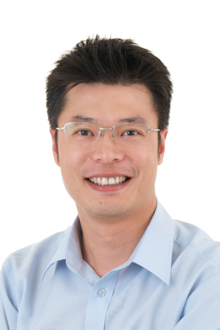
John T. W. Yeow received the B.A.Sc. degree in electrical and computer engineering, and M.A.Sc. and PhD. degrees in mechanical and industrial engineering from the University of Toronto, Toronto, ON, Canada. He is currently a Professor and a University Research Chair in the Department of Systems Design Engineering at University of Waterloo, Waterloo, ON, Canada. He is focused on the development of micro/nanodevices for a wide range of applications. He is a recipient of the Professional Engineers Ontario Young Engineer Medal, Professional Engineers Ontario Engineering Excellence Award, Natural Science & Engineering Research Canada Innovation Challenge Award, Douglas R. Colton’s Medal of Research Excellence, Micralyne Microsystems Design Award, Ontario Ministry of Research and Innovation’s Early Researcher Award, University of Toronto Alumni Association 7T6 Early Career Award, 2011 IEEE NANO Excellence Paper award and IEEE Canada Outstanding Engineer Award. He was a Canada Research Chair in Micro/Nanodevices (2004 – 2019). He served as the Editor-in-Chief of the IEEE Nanotechnology Magazine from 2014 – 2019, a Senior Editor of the IEEE Transactions on NanoBioscience, and an Associate Editor of the IEEE Transactions of Nanotechnology. He is a Fellow of the Canadian Academy of Engineering, the Engineering Institute of Canada, Engineers Canada, and a Member of College of New Scholars, Artists and Scientists of the Royal Society of Canada. He was a IEEE Nanotechnology Technical Council Distinguished Lecturer.
https://uwaterloo.ca/institute-nanotechnology/people-profiles/john-yeow

